Day 1: Jaipur Day Tour Pickup from Your Hotel at 8.30 am Morning excursion to Amber Fort , the ancient capital of the state until 1728 AD. Visit the Jagmandir or the Hall of Victory and the Temple of Kali. Return to Jaipur stopping for a few minutes for photography at Jal Mahal. Visit City Palace in the afternoon & Jantar Mantar (observatory), Albert Hall Museum, Ram Niwas Gardens; drive past Hawa Mahal / the Palace of Winds & through the pink rose residential/business areas of Jaipur. and Drop at your hotel in the evening
Sightseeing In Jaipur, India. The Pink City of Jaipur is a charming place, which dazzles the eye of a tourist with several architectural landmarks, stylish monuments, palaces, museums, wide avenues and colorful bazaars. Though less than 300 years old, the city is already full of mysteries and legends. Jaipur is surrounded by hill top forts such as Amber Fort, Jaigarh and Nahargarh. Enjoy your wonderful discovery of the unparallel beauty of Jaipur.
City Palace-Conceived and designed by Jai Singh, the City palace is a fine blend of Rajasthani and Mughal architecture. One of the most important architectural landmarks in Jaipur, this he palace complex has numerous buildings, courtyards, impressive Gateways and temples. The palace houses Sawai Jai Singh’s seven-storey facade Chandra Mahal (“moon palace”), solid marble Mubarak Mahal, the Diwan-e-Aam and Diwan-e-Khas (the Hall of Private Audience). Chandra Mahal is still the residence of the present royal family.
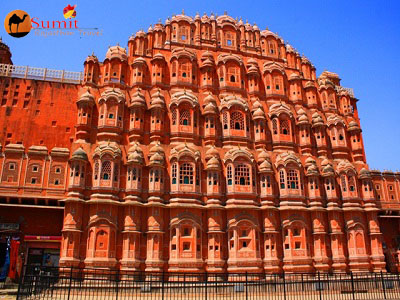
Hawa Mahal-Arguably Jaipur’s most acclaimed landmark, the tapering Hawa Mahal, or “Palace of Winds” was built in 1799 to enable the ladies of the royal household to watch street processions while remaining in a strict state of purdah. Its five-storey facade, decked with no less than 593 finely screened windows and balconies, makes the building seem far larger than it really is; in fact it is little more than one room thick in most parts.
Though the primary source of its appeal is undoubtedly the fantastic honeycomb pink and white face, visitors can go inside (enter from the back) to see exactly where the women sat, and take a close look at the detailed stonework
Amber Fort –
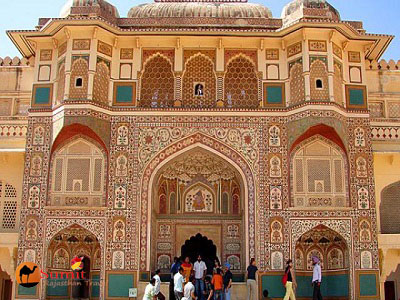
Perched on a hill some 11km from Jaipur, and nestling among the Aravalli Hills, is the historic fort-palace of Amber. Set in a picturesque background, the splendid Amber Fort (Jaigarh) was built in 1600 by Raja Man Singh, commander-in-chief of the Mughal army during Akbar’s reign and certainly one the greatest general of medieval India. The fort also made the headlines after Independence when it was supposed to be the most likely hiding place of the Kuchwahas’ famous lost treasure. As India entered into a new dawn after its independence from the British and as a result, the princely states have to submit to the Indian Union, there was fear among the rulers that their huge fortunes may be confiscated by the government. Though the Income tax sleuths scoured the fort with metal detectors but found nothing.
Jal Mahal –
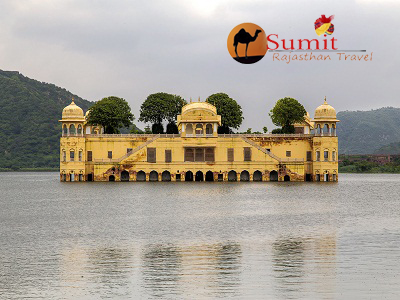
Jal Mahal is a palace located in the middle of the Man Sagar Lake in Jaipur city, the capital of the state of Rajasthan, India. The palace and the lake around it were renovated and enlarged in the 18th century by Maharaja Jai Singh II of Amber.

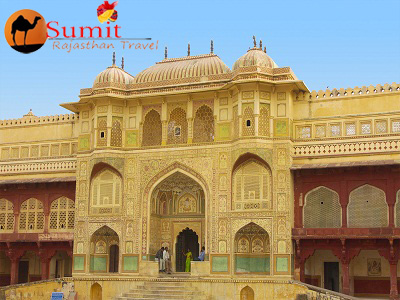

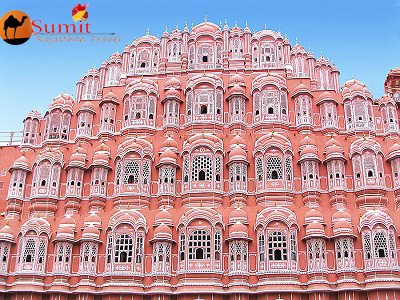
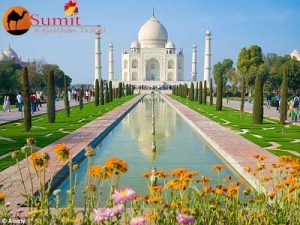
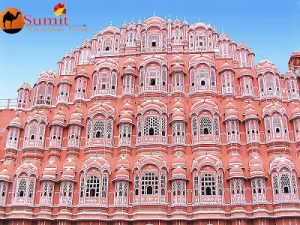
Average Rating